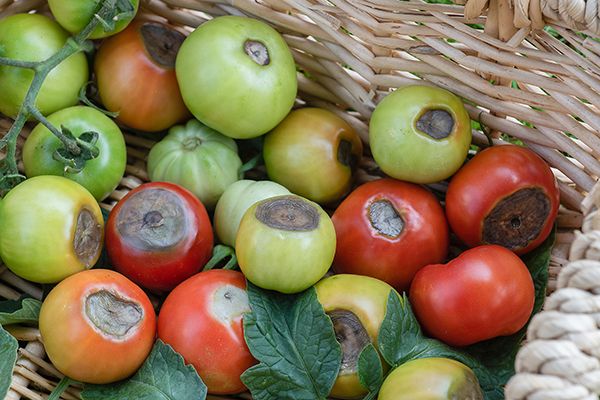Avoid Blossom End Rot this Season

Picture this: you’ve had a bountiful garden season this year, with plenty of fruits and vegetables to share with your loved ones. Except, when you go to harvest the produce, you notice black, leathery patches on the bottom of all your tomatoes! This headache of a problem is called “blossom end rot”, and also tends to affect peppers, eggplant, squash, and watermelon.
The black spots on the bottom of your produce is rotting blossom tissue, caused by a calcium deficit in the fruit. This lack of calcium can be due to a deficit in the soil or a calcium uptake impairment in the plant itself. Root damage, cold soil, and draught stress can all take a part in impairing calcium uptake.
Now that you are aware of what’s causing blossom end rot, there are a few steps you can take to help reduce its prevalence. First, don’t plant too early when the soil is cold. Also, try not to cultivate too close to the plant, which risks damaging the roots. You can add Hi-Yield™ Calcium Nitrate to the soil during the initial planting, then again when the fruit starts to form, and finally 2-3 weeks later.
If you already have blossom end rot, there is hope yet! Try applying Hi-Yield™ Calcium Nitrate to the plant, and repeat in 2-3 weeks. Ferti-Lome™ Yield Booster should be applied to the fruit, not the leaves, every 10-14 days. To direct energy towards healthy fruit, remove infected fruit before application.
Lastly, improve your healthy produce yield by feeding your plants Hi-Yield™ Garden Fertilizer which will not compete with the calcium uptake. Apply Ferti-Lome™ Tomato & Pepper Set to the back of the blossoms and adjacent stems to increase your yield!
For more information about blossom end rot and keeping your garden healthy this year, visit your local Joe’s Market Basket stores located in Edwardsville, Godfrey, Troy and O’Fallon, or visit www.joesmarketbasket.com.


